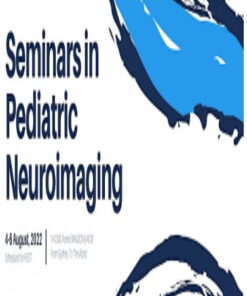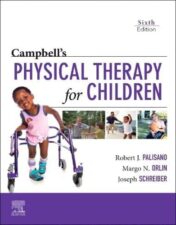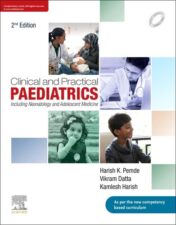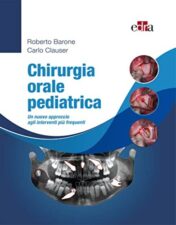Unlock the Secrets of General Pediatrics: A Comprehensive Guide to Caring for Children
Discover the Benefits of General Pediatrics with this Essential Guide!
Are you looking for a comprehensive guide to general pediatrics? Look no further than General Pediatrics: A Primary Care Approach. This book provides an in-depth look at the diagnosis and management of common pediatric conditions, as well as the latest evidence-based guidelines for preventive care. It also covers topics such as nutrition, mental health, and developmental disabilities. With its easy-to-follow format and clear explanations, this book is an invaluable resource for any healthcare provider who works with children. Get your copy today and start learning how to provide the best possible care for your young patients!
GENERAL PEDIATRICS
Seminars in Pediatric Neuroimaging 2022 (SPIN 2022) (CME VIDEOS)
GENERAL PEDIATRICS
Chestnet Pediatric Pulmonary Board Review On Demand 2022 (CME VIDEOS)
GENERAL PEDIATRICS
GENERAL PEDIATRICS
GENERAL PEDIATRICS
Manual Of Pediatric Cardiac Intensive Care Pre – And Postoperative Guidelines 2012 Original PDF
GENERAL PEDIATRICS
Neuromonitoring in Neonatal and Pediatric Critical Care 2022 Original PDF
GENERAL PEDIATRICS
GENERAL PEDIATRICS
GENERAL PEDIATRICS
Campbell’s Physical Therapy for Children, 6th edition 2022 Original PDF
GENERAL PEDIATRICS
Developmental-Behavioral Pediatrics, 5th edition 2022 Original PDF
GENERAL PEDIATRICS
GENERAL PEDIATRICS
Netter’s Pediatrics, 2nd Edition (Netter Clinical Science) 2022 Original PDF
GENERAL PEDIATRICS
GENERAL PEDIATRICS
Frakturen und Luxationen im Wachstumsalter, 7 Auflage 2022 Original PDF
GENERAL PEDIATRICS
GENERAL PEDIATRICS
Handbook of Pediatric Rehabilitation Medicine 2022 Original PDF
GENERAL PEDIATRICS
Diagnosis and Management of Pediatric Nephrolithiasis 2022 Original PDF
GENERAL PEDIATRICS
GENERAL PEDIATRICS
Child-led Tube-management and Tube-weaning 2022 Original PDF
GENERAL PEDIATRICS
GENERAL PEDIATRICS
Pediatric Anesthesia : A Comprehensive Approach to Safe and Effective Care 2022 Original PDF
GENERAL PEDIATRICS
GENERAL PEDIATRICS
GENERAL PEDIATRICS
Paediatric Emergency Medication Book: India 2022 Original PDF
GENERAL PEDIATRICS
GENERAL PEDIATRICS
GENERAL PEDIATRICS
Litman’s Basics of Pediatric Anesthesia, 3rd edition 2022 Original PDF
GENERAL PEDIATRICS
Pediatric Colorectal Surgery: Tips & Tricks 2022 Original PDF
Introduction
Are you a healthcare professional looking to unlock the secrets of general pediatrics? Look no further! This comprehensive guide provides an in-depth look at caring for children of all ages. From understanding common childhood illnesses and conditions to providing the best possible care, this guide covers it all. With easy-to-follow instructions and helpful tips, you'll be able to provide the highest quality of care to your young patients. Unlock the secrets of general pediatrics today and give your patients the best care possible.
Understanding Common Pediatric Conditions
Understanding common pediatric conditions is essential for parents and caregivers of children. Pediatric conditions are illnesses, diseases, or disorders that affect children from birth to adolescence. These conditions can range from mild to severe and can be caused by a variety of factors, including genetics, environmental exposures, and lifestyle choices.
Common pediatric conditions include asthma, allergies, obesity, diabetes, autism spectrum disorder, attention deficit hyperactivity disorder (ADHD), and learning disabilities. Asthma is a chronic lung condition that causes difficulty breathing due to inflammation and narrowing of the airways. Allergies are an overreaction of the immune system to certain substances, such as pollen, dust mites, and pet dander. Obesity is a condition in which a person has too much body fat and is at risk for health problems. Diabetes is a metabolic disorder in which the body does not produce enough insulin or cannot use it effectively. Autism spectrum disorder is a developmental disorder characterized by difficulties with social interaction, communication, and repetitive behaviors. Attention deficit hyperactivity disorder is a neurodevelopmental disorder characterized by difficulty paying attention, impulsivity, and hyperactivity. Learning disabilities are neurological disorders that affect a person’s ability to process information and can affect reading, writing, math, and other academic skills.
It is important for parents and caregivers to be aware of these common pediatric conditions and to understand the signs and symptoms associated with them. Early diagnosis and treatment can help reduce the severity of the condition and improve the child’s quality of life. Parents should also be aware of the potential risks associated with each condition and take steps to minimize those risks. This may include avoiding environmental triggers, making lifestyle changes, and seeking medical advice when necessary.
Diagnosing and Treating Childhood Illnesses
Diagnosing and treating childhood illnesses is an important part of pediatric care. It is essential for parents to be aware of the signs and symptoms of common childhood illnesses, as well as how to properly diagnose and treat them.
The first step in diagnosing and treating a child’s illness is to take a thorough medical history. This includes asking questions about the child’s symptoms, any recent illnesses or exposures, and family medical history. The doctor may also perform a physical exam to look for signs of infection or other problems. Depending on the suspected diagnosis, the doctor may order additional tests such as blood work, imaging studies, or other laboratory tests.
Once a diagnosis is made, the doctor will discuss treatment options with the parents. Treatment may include medications, lifestyle changes, or other therapies. In some cases, hospitalization may be necessary. It is important to follow the doctor’s instructions carefully and to monitor the child’s progress.
Common childhood illnesses include colds, flu, ear infections, strep throat, asthma, allergies, and more. Each of these illnesses has its own set of signs and symptoms, and it is important to recognize them so that they can be treated promptly. For example, a cold may cause a runny nose, sneezing, and coughing, while an ear infection may cause fever, ear pain, and difficulty hearing.
It is also important to be aware of the potential complications of childhood illnesses. Some illnesses, such as pneumonia, can be serious and require immediate medical attention. Other illnesses, such as chickenpox, can lead to long-term health problems if not treated properly.
By recognizing the signs and symptoms of common childhood illnesses, parents can ensure that their children receive prompt and appropriate medical care. With proper diagnosis and treatment, most childhood illnesses can be managed successfully.
Developing a Comprehensive Care Plan for Children
Developing a comprehensive care plan for children is an important part of providing quality healthcare. A comprehensive care plan is a document that outlines the goals, objectives, and strategies for providing care to a child. It should include information about the child’s medical history, current health status, and any special needs or concerns. The plan should also include a timeline for achieving the desired outcomes and a list of resources available to help meet those goals.
The first step in developing a comprehensive care plan is to assess the child’s current health status. This includes gathering information about the child’s medical history, physical examination, laboratory tests, and other diagnostic tests. This information will help the healthcare provider determine the best course of action for the child.
Once the assessment is complete, the healthcare provider can develop a plan of care. This plan should include specific goals and objectives for the child’s care. These goals should be realistic and achievable. The plan should also include strategies for achieving these goals. These strategies may include lifestyle changes, medications, therapies, or other interventions.
The next step is to create a timeline for achieving the desired outcomes. This timeline should include short-term and long-term goals. Short-term goals are those that can be achieved within a few weeks or months. Long-term goals are those that require more time and effort to achieve.
Finally, the healthcare provider should identify resources available to help meet the goals outlined in the plan. These resources may include community organizations, support groups, or other healthcare providers. It is important to ensure that the resources are appropriate for the child’s age and condition.
Developing a comprehensive care plan for children is an important part of providing quality healthcare. By assessing the child’s current health status, setting realistic goals, creating a timeline for achieving those goals, and identifying resources available to help meet those goals, healthcare providers can ensure that the child receives the best possible care.
Administering Vaccines and Immunizations
Promoting Healthy Habits in Children
Promoting healthy habits in children is an important part of parenting. Healthy habits are the foundation for a lifetime of good health and well-being. Teaching children healthy habits early on can help them develop lifelong healthy behaviors that will benefit them throughout their lives.
One of the most important things parents can do to promote healthy habits in children is to set a good example. Children learn by watching and imitating their parents, so it’s important for parents to practice healthy habits themselves. This includes eating a balanced diet, exercising regularly, getting enough sleep, and avoiding unhealthy behaviors such as smoking or drinking alcohol.
It’s also important to encourage children to make healthy choices. Parents should provide healthy snacks and meals, and limit sugary drinks and junk food. They should also encourage physical activity, such as playing outside or joining a sports team.
Parents should also talk to their children about the importance of good hygiene. This includes teaching them how to brush their teeth twice a day, wash their hands before eating, and shower regularly.
Finally, parents should teach their children about the importance of mental health. This includes encouraging them to express their feelings, helping them find positive ways to cope with stress, and teaching them how to build healthy relationships.
By setting a good example and teaching children healthy habits, parents can help ensure their children grow up to be healthy and happy adults.
Conclusion
In conclusion, Unlock the Secrets of General Pediatrics: A Comprehensive Guide to Caring for Children is an invaluable resource for any healthcare professional looking to gain a comprehensive understanding of pediatric care. This guide provides detailed information on topics such as diagnosis and treatment, nutrition, and preventive care, making it an essential tool for anyone working with children. With its easy-to-understand language and comprehensive coverage, this book is sure to help unlock the secrets of general pediatrics and provide the knowledge needed to provide the best possible care for children.






























